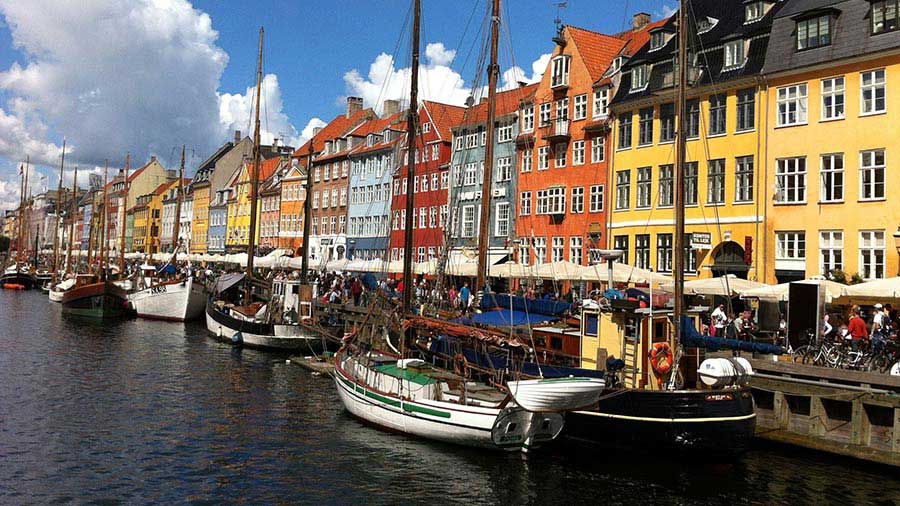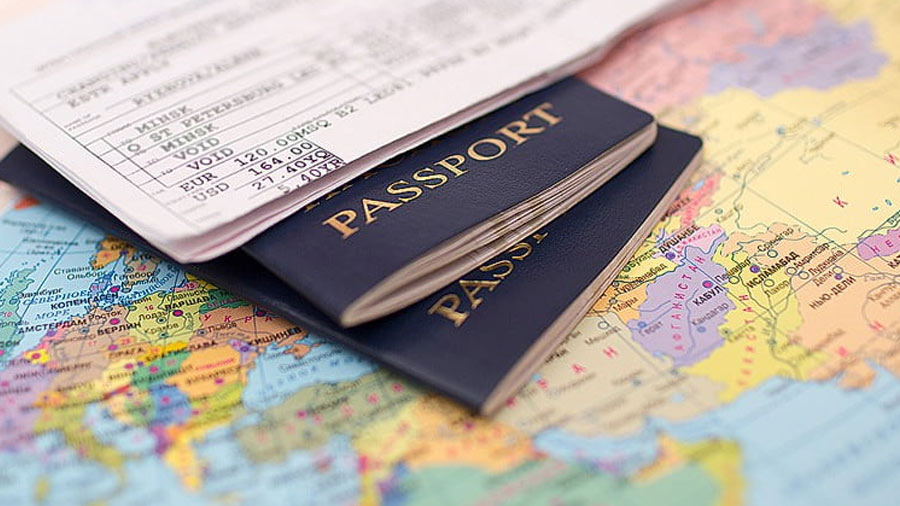Xi’s Visit to India & Sri Lanka Promises Infrastructure, Shipping & Tourism
Op-Ed: Chris Devonshire-Ellis
India is in the spotlight following the decision to cancel the Pakistan leg of Chinese President Xi Jinping’s South Asia tour to India and Sri Lanka. In an unusual move, China postponed Xi’s visit to Pakistan, one of China’s closest allies, due to political uncertainty in Islamabad. This puts on hold the development of proposed trade corridors between Xinjiang and Pakistan—part of a long-term Chinese strategic plan to combat restlessness in the region by creating wealth through trade—and refocuses the trip largely on Chinese ties with India.
Xi will now visit Sri Lanka first, the small island nation that has already had much of its infrastructure improved by Chinese investment. As Indian worker demographics are ensuring that a large percentage of future global manufacturing will move to India, China needs to secure huge amounts of high-capacity Indian production to keep its own population supplied with affordable and inexpensive daily products. India is the only country with the workforce and proximity to China to be able to provide this; however, security and other concerns between the two nations have not always made cooperation easy.
Added to this, until recently the Indian government has been hog-tied in its own democratic process and unable to get major reforms in place, opening a significant infrastructure gap on India’s east coast. China has been quick to bypass this, turning to a friendly Sri Lanka for assistance. The result has been the redevelopment of Sri Lanka’s main port in Colombo, which China not only financed, but also owns the majority stake in.
RELATED: China & Sri Lanka To Seal Free Trade Agreement This Year
The port facilities are mainly concentrated on the transshipment, processing and repacking of Indian products destined for the China market. It is a little observed fact that as China’s population ages, they will continue to need low cost, reasonable quality consumer products, and in the face of increasing production costs in China, sourcing from India has become vital to the sustained prosperity of the Middle Kingdom. The Colombo Port’s primary role is to facilitate this future bilateral trade demographic.
In return for Sri Lanka’s strategic assistance, China has been involved in a mass infrastructure development project throughout the country. This is something that the Indian Government would be wise to consider as they mull China’s offer to pay for India’s own infrastructure development. Sri Lanka now has a national highway system, much of which is completed, and a second international airport at Hambantota in the country’s southeast, together with another massive port facility.
That airport, when fully operational (the government is negotiating with budget airlines at this moment), will permanently alter the nature of tourism in South Asia. The Hambantota airport cuts 30 minutes off flight times into Sri Lanka from elsewhere in Asia, and coupled with the new expressways, reduces the travelling time to reach Sri Lanka’s gorgeous southern beaches to under an hour; accessing them from Colombo, even with the highways, is a four-five hour journey. It is no wonder that high-end hotel chains and resorts have been buying up vast swathes of land along Sri Lanka’s southeast coast. Within the next five years, Sri Lanka will become one of Asia’s premium tourist destinations. Many of them will of course be Chinese.
RELATED: Establishing a Liaison Office to Reach the Indian Market
Meanwhile, Pakistan’s failure to attract Xi Jinping will be met with smiles in India. For the first time in 30 years, India is ruled by a government possessing an absolute majority, and a foreign-investment friendly incumbent to boot. As mentioned, India has become an important strategic status play for China; the Chinese need India to get to work and provide it with the consumer goods it so desperately needs. As the Chinese population greys, its workforce is becoming more expensive. It is five times cheaper to hire a worker in Mumbai than it is in Guangzhou, and only India has the mass labor pool needed to properly service Chinese demand.
But to get there, the country needs to upgrade its infrastructure – hence the reason behind the Chinese offer, just as in Sri Lanka, to do so. That offer is still being assessed by the Modi government, and no doubt there will be security concerns somewhere in the mix. Yet rapprochement over long-disputed territories is also in the cards, and it is possible that China and India may settle these, if not during Xi’s visit then certainly in the near future.
Areas to watch will be in India’s aviation industry – the Indian market is the fastest growing in the world, and as bilateral trade increases, so too will the number of flights between China and India. Road, rail and airport development will also be discussed, especially on India’s southeast coast, where development is occurring at a pace much slower than China’s domestic market growth.
RELATED: The Indian Advantage: Asia’s Next Manufacturing Juggernaut
In short, India needs to recalibrate its supply chain to cater to China demand— how to do this, and the funding required to do so will be a large part of the discussions to come. For India, it may also be time to turn its perennial focus away from its western border with Pakistan, and look east, towards China. Pakistan is a security concern and offers little in the way of trade development, at a time when China offers huge trade opportunities and far fewer risks.
This dynamic is pushing Pakistan towards becoming a bit part player, and making it clear to both China and India that, if managed correctly, their bilateral relationship will thrust India into three decades of double-digit growth and secure the immediate future of China’s Communist Party, underpinning the new strategic alliance between China and India and boding well for their mutual prosperity.
Chris Devonshire-Ellis is the Founding Partner of Dezan Shira & Associates – a specialist foreign direct investment practice providing corporate establishment, business advisory, tax advisory and compliance, accounting, payroll, due diligence and financial review services to multinationals investing in emerging Asia. Since its establishment in 1992, the firm has grown into one of Asia’s most versatile full-service consultancies with operational offices across China, Hong Kong, India, Singapore and Vietnam, in addition to alliances in Indonesia, Malaysia, Philippines and Thailand, as well as liaison offices in Italy, Germany and the United States. For further information, please email china@dezshira.com or visit www.dezshira.com.
Stay up to date with the latest business and investment trends in Asia by subscribing to our complimentary update service featuring news, commentary and regulatory insight.
Related Reading
A Wary Mongolia Signs Infrastructure & Investment Deals with China
 Passage to India: Selling to India’s Consumer Market
Passage to India: Selling to India’s Consumer Market
In this issue of India Briefing Magazine, we outline the fundamentals of India’s import policies and procedures, as well as provide an introduction to the essentials of engaging in direct and indirect export, acquiring an Indian company, selling to the government and establishing a local presence in the form of a liaison office, branch office, or wholly owned subsidiary. We conclude by taking a closer look at the strategic potential of joint ventures and the advantages they can provide companies at all stages of market entry and expansion.
 Manufacturing Hubs Across Emerging Asia
Manufacturing Hubs Across Emerging Asia
In this issue of Asia Briefing Magazine, we explore several of the region’s most competitive and promising manufacturing locales including India, Indonesia, Malaysia, Singapore, Thailand and Vietnam. Exploring a wide variety of factors such as key industries, investment regulations, and labor, shipping, and operational costs, we delineate the cost competitiveness and ease of investment in each while highlighting Indonesia, Vietnam and India’s exceptional potential as the manufacturing leaders of the future.
 Adapting Your China WFOE to Service China’s Consumers
Adapting Your China WFOE to Service China’s Consumers
In this issue of China Briefing Magazine, we look at the challenges posed to manufacturers amidst China’s rising labor costs and stricter environmental regulations. Manufacturing WFOEs in China should adapt by expanding their business scope to include distribution and determine suitable supply chain solutions. In this regard, we will take a look at the opportunities in China’s domestic consumer market and forecast the sectors that are set to boom in the coming years.
- Previous Article Deutsche Wirtschaftsdelegation erkundet Vorzeigestadt Zhangjiagang in China
- Next Article Der Guangzhou Development Distrikt (Teil 3)



























